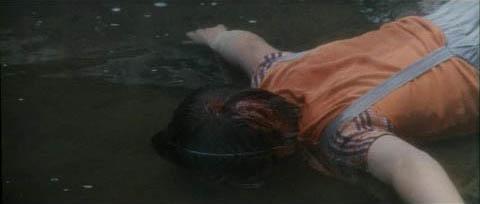
Don't Torture a Duckling (Movie Review)
“Don’t Torture a Duckling” is the story of Accendura, a remote village in Central Italy that is beset by a rash of child murders. The police race against the growing rage of the community to find a killer in a town of myriad secrets. Accendura’s residents are closed off and superstitious, augmenting Catholicism with provincial spirits and the charms of a local shaman. The influences of early seventies Italy on the closed world of Accendura comes mostly in the form of hookers, outcasts, and in the middle of this crisis, a band of soulless reporters. Not only are the children of this tiny outpost in peril but the entire lifestyle is threatened as well. Traps are set for the killer, red herrings come and go quickly and the paranoia of the mob begins envelop the entire village.
The film was Lucio Fulci’s next Giallo effort following the technically exquisite, well-constructed “A Lizard in a Woman’s Skin.” But aside from being a Giallo and bringing Florinda Balkan back into the fold, the movie is a sizable departure from ‘Lizard. ‘Lizard trafficked in genre standards by embracing fashion forward sensibilities and highlighting urban settings to help contrast ideologies and motivate horrific events. Duckling uses a flipped script, one with a sectarian town and an individual acrimonious zealot, to indict a situational crisis and represent the potential pitfalls when trying to close a divide too fast, as well as those of trying to keep it open against shifting social tides.
Fulci’s film is a madhouse narrative populated with an army of specious country folk that deposit threat and craze into nearly every scene in the film. The principle players function mostly as plot movers and take a backseat to the atmosphere and the flourishes of mayhem. This is fairly standard, not unlike many horror films, Giallo tend to prize mood and plot over character depth. There are of course exceptions throughout the cycle and one of those notable deviations occurs in ‘Duckling. The indelible performance of this film is turned in by Florinda Balkan, playing Machara, a peasant woman of severely compromised mental and emotional faculty. Macahara’s tale illustrates one of the key ideas at the center of Fulci’s premise, that when world’s collide those who suffer most profoundly are the innocent and the infirm. Her story elevates what would have otherwise been another accomplished Fulci outing into the jewel of his catalog. This is because with her subplot Lucio Fulci and Balkan manage not only a layered character study, but they pull off the rarest of Giallo feats, an emotional crescendo that is crushing and memorable.
The rest of ‘Duckling ain’t bad either. The gore co-efficient is low for a Fulci film but the tenor of the violence and the consistent introduction of off-putting characters more than makes up for it. Aside from Machara, Accendura is home to a seductive, drug-addict female pedophile, a witchdoctor, a retarded young girl with a headless doll, a simpleton vagrant and a small army of Tween boys who smoke like chimneys and peep through barn holes to watch prostitutes servicing the men in the community. This cast of misfits comprises the innocents that are scrutinized and ultimately victimized by the narrow, pious minds of the town’s citizenry.
On pure mechanics "Duckling" is a triumph. The story is tight and it moves; weaving several different threads into its center and keeping the atrocities paramount throughout. The editing is a deft negotiation of smooth attention to classical film language and jarring jumps to create impact and mislead the viewer. Fulci and cinematographer Sergio D'Offizi carve Accendura out of a panoramic snaking highway and the blanched Italian boot heel town of Matera. The arid crags and stony fields seem rife with evil spirits and burgeoning traumas. Add to this Riz Ortolani’s jolty score, one of his best outside of Cannibal Holocaust, and the movie positively buzzes with simmering tensions.
The shortfalls of this Giallo are very few but worth a mention. Lucio’s bloodlust and some dated and unconvincing practical effects cut away much of the impact from an otherwise taut finale. The thinness of some of the characters really does take away from certain plot threads. But perhaps most disappointing to newbies is the familiar bugaboo of this era in Italian cinema; overdubbing. Those who have watched a great deal from that time period will be lightly affected, but viewers with more modern sensibilities often see struggle with accepting it as a fact of the process during those days.
None of this should stop you from watching “Don’t Torture a Duckling”. It is the most complete and impactful of all of Fulci’s better known films. It is a barren, shattering story that walks both sides of the line between exploitation and stinging apologue. It not only indicts the Catholic Church but takes a grim view of the unavoidable casualties of social change. But lest you think it too high concept, here is a little detail of the film’s T.A.G. (Tits. Ass. Gore) index: During the 100 minute runtime, you get Barbara Bouchet naked (3/4 frontal) and looking like 6 feet of tan fire, A bone and sinew exposing chain flogging in a an abandoned cemetery, brain matter, a 12 year old drowning in the town washing hole, a man’s face sheared off by a cliff face, a fetal skeleton, Fellini-esque fat whores, Lizard cruelty (hopefully faked), voodoo, foaming at the mouth and a dismembered Donald Duck Doll. Give it a watch.

